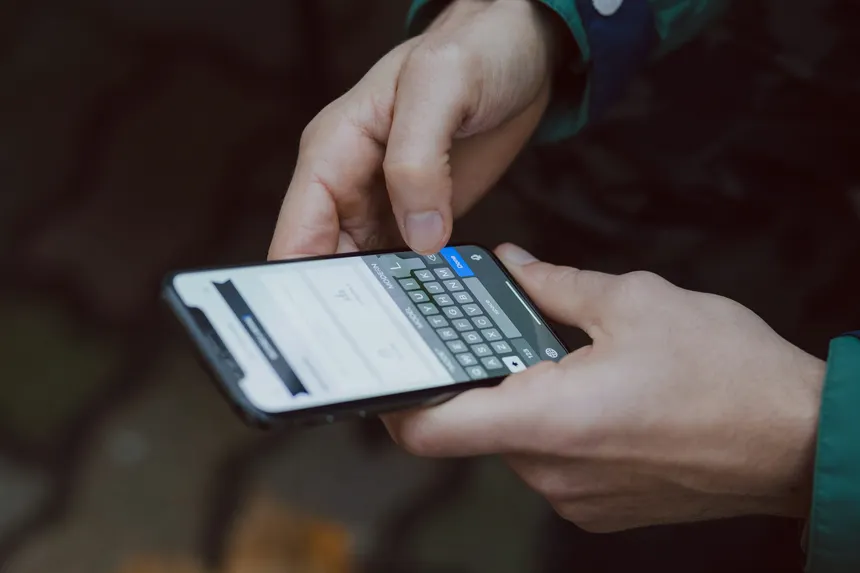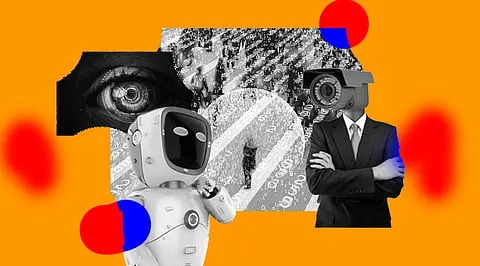The other day I came across a news story about a new application of AI. In an interview, academic researchers in Computer science and Cybersecurity explained how they trained an AI model to guess passwords based on the sounds of keystrokes that your laptop makes.
Honestly, my first thought was “Yeah right. That’s straight out of a James Bond movie.” I pictured a spy with an earpiece saying some tech mumbo-jumbo like, “Enhance the keystroke sounds, differentiate the frequencies, collapse the wave function… we’ve got the password!”
But it turns out that a seemingly fictional piece of spy equipment is now a real life technology. Researchers have proven that AI can analyze the tiny differences in sound each key makes and then piece together what you’re typing. On a nearby phone mic, the AI hit 95% accuracy per keystroke. Even through a Zoom call, it is still able to hit a confidence of 93% per keystroke.
At first, I was worried this meant AI was becoming too dangerous. If this kind of technology fell into the wrong hands, wouldn’t anyone be at risk of typing in their own password out in public?So, I dug deeper. And while it is a safety concern, the good news is: it’s not something that should keep you up at night as long as you take some smart precautions.

How This Actually Works
The idea behind the attack is surprisingly simple once you break it down. Every time you press a key, it doesn’t just sound like a click. Each noise your typing makes has its own acoustic fingerprint. Through a combination of pitch, duration, and distance from the microphone, the AI model was trained to detect subtle differences in the sonograph results of each individual key press. Most of us can’t hear the difference between pressing “A” and pressing “S,” but a microphone picks up more detail than the human ear ever could.
The researchers recorded long typing sessions, then sliced them into single key presses. Each of those little clips was labeled with the correct letter and converted into a kind of sound “picture” called a spectrogram. They then fed thousands of these labeled spectrograms into a machine learning model until it got good at recognizing the patterns. Over many training rounds, called epochs, the AI got sharper at telling keys apart, eventually hitting those 93–95% accuracy numbers.
In plain language: to us, all key clicks sound the same. To AI, one key might sound like a piano note in C-sharp and another like D-flat. Once it learns the scale, it can play back the song of your typing.

Where This Becomes a Real Risk
This isn’t a case where you need to panic that your keyboard is spying on you right now. But there are real-world situations where this kind of technology could be a problem. Think about all the times you could be logging into your work account while unmuted on a Zoom or Teams call. Even through compressed, slightly noisy call audio the researchers displayed that the AI still worked. Or consider a smartphone sitting on your desk, quietly listening through its mic. Malware on that phone could use it as an invisible keylogger. Smart speakers like Alexa or Google Home are another possible target, since they’re always listening in the background.
And then there’s the risk in shared environments. In a coffee shop, a coworking space, or even an office meeting, a recording device in the room could quietly capture keystrokes without anyone noticing. The scary part is that this doesn’t just apply to passwords. In theory anything you type can be exposed, from your banking PIN to sensitive work documents.
What You Can Do to Stay Safe
Thankfully, the solution here isn’t throwing your laptop into a river. A little awareness and some practical habits are all you need. Here are a few things that go a long way in protecting yourself:
- Mute your mic before typing passwords on calls.
- Keep phones or smart speakers away from your keyboard.
- Avoid shady websites and downloads.
- Fingerprints or Face ID.
- Turn on multi-factor authentication (MFA).
- Use a password manager or regularly change your passwords.
You don’t need to follow every one of these steps perfectly all the time, but combining a few of them dramatically reduces your risk.